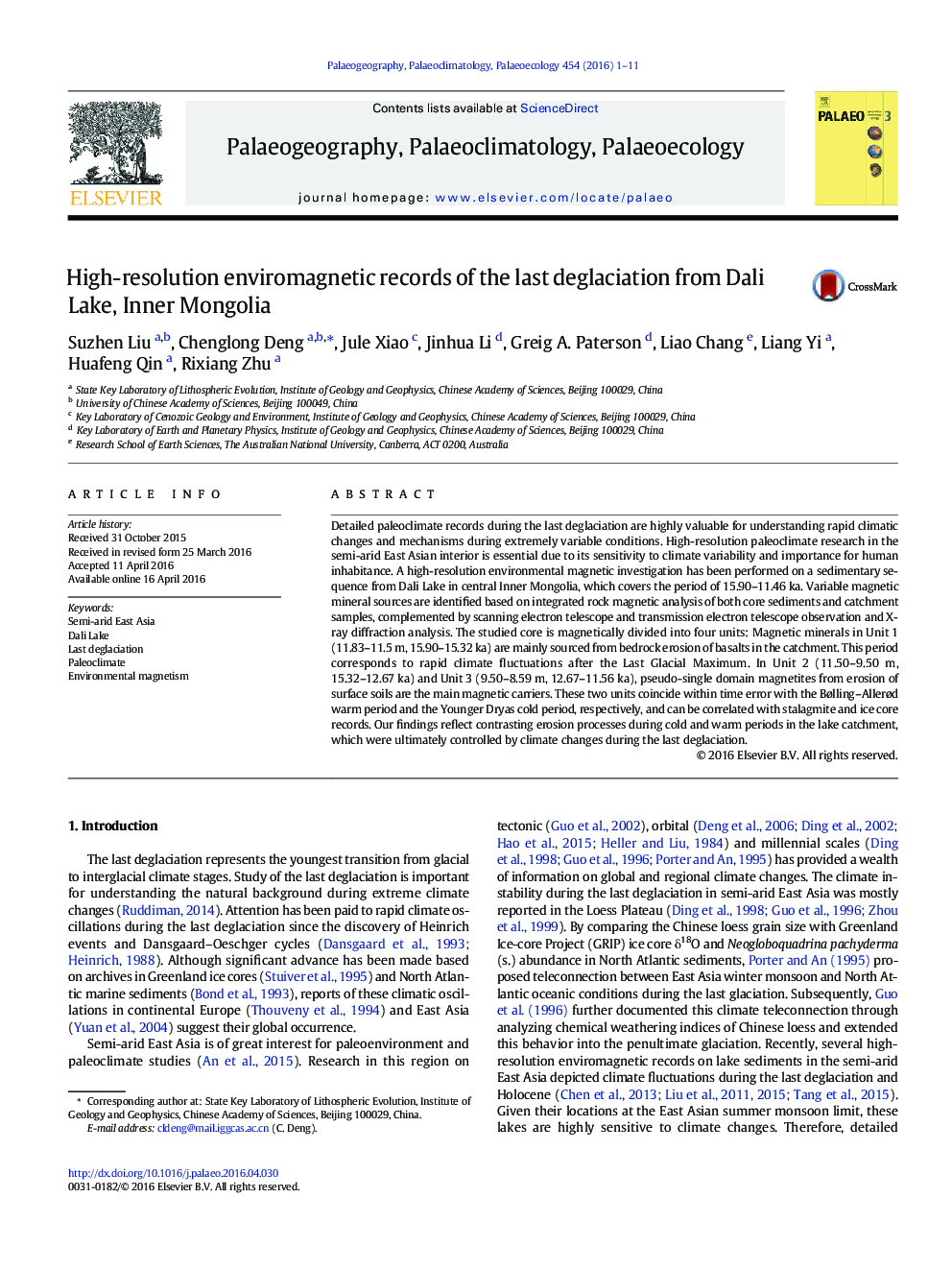| کد مقاله | کد نشریه | سال انتشار | مقاله انگلیسی | نسخه تمام متن |
|---|---|---|---|---|
| 4465592 | 1622137 | 2016 | 11 صفحه PDF | دانلود رایگان |
• We report a high-resolution lake record in semi-arid East Asia during the last deglaciation.
• Magnetic mineral sources were identified by comparing core and catchment samples.
• Different erosion processes during cold and warm periods were recovered.
• Millennial-scale paleoclimate fluctuations are documented in Dali Lake.
Detailed paleoclimate records during the last deglaciation are highly valuable for understanding rapid climatic changes and mechanisms during extremely variable conditions. High-resolution paleoclimate research in the semi-arid East Asian interior is essential due to its sensitivity to climate variability and importance for human inhabitance. A high-resolution environmental magnetic investigation has been performed on a sedimentary sequence from Dali Lake in central Inner Mongolia, which covers the period of 15.90–11.46 ka. Variable magnetic mineral sources are identified based on integrated rock magnetic analysis of both core sediments and catchment samples, complemented by scanning electron telescope and transmission electron telescope observation and X-ray diffraction analysis. The studied core is magnetically divided into four units: Magnetic minerals in Unit 1 (11.83–11.5 m, 15.90–15.32 ka) are mainly sourced from bedrock erosion of basalts in the catchment. This period corresponds to rapid climate fluctuations after the Last Glacial Maximum. In Unit 2 (11.50–9.50 m, 15.32–12.67 ka) and Unit 3 (9.50–8.59 m, 12.67–11.56 ka), pseudo-single domain magnetites from erosion of surface soils are the main magnetic carriers. These two units coincide within time error with the Bølling–Allerød warm period and the Younger Dryas cold period, respectively, and can be correlated with stalagmite and ice core records. Our findings reflect contrasting erosion processes during cold and warm periods in the lake catchment, which were ultimately controlled by climate changes during the last deglaciation.
Journal: Palaeogeography, Palaeoclimatology, Palaeoecology - Volume 454, 15 July 2016, Pages 1–11
